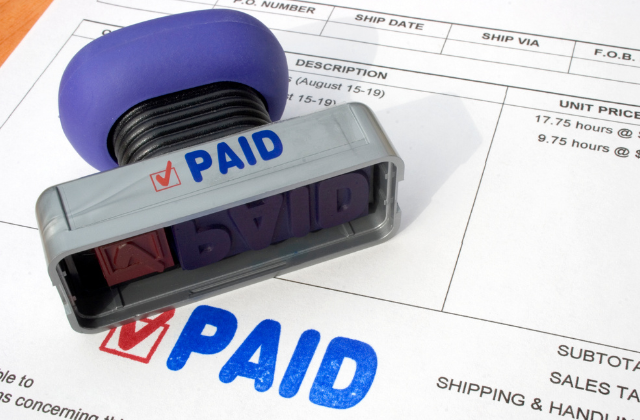
This article about getting started teaching piano lessons in schools and preschools was written by Gemma Wilkins. Gemma is our Community Assistant at Vibrant Music Teaching and runs a music teaching studio in the regional town of Mudgee in Australia. Teaching piano to preschoolers and primary-aged students while raising two young children has been her reality for the last five years. You can read more about Gemma and her teaching studio on her website.
Do you want to fill the middle of your days with music lessons? Is your schedule heavily skewed to the afternoons and evenings? If so, then teaching piano lessons in schools may be a great option for your studio.

Gaining a music teaching spot in a school or preschool will help fill those morning and daytime spaces, and is a great way to boost student numbers and income.
Now, I am not talking about being a classroom teacher; I’m talking about bringing your business into a school or preschool as an extracurricular activity. Here’s how you can get started.
Step 1: Get Clear
It’s important to consider your ideal students and where you’ll find them, as that will impact your curriculum and teaching resources. Being clear on this from the start will save you time, money and effort.
Preschool Groups
Becoming a music teacher in a preschool may require a different curriculum than what you currently use in your usual piano lessons. It should be more exploratory and involve movement, rhythm repetition and singing, which tends to work better in group classes.
Individual lessons may be an option, depending on the resources. But I’ve found it’s better to have a one-to-many lesson plan so you can go into the preschool room any day, with any number of children and make music together.
Our preschool curriculum “Mini Musicians” lays out detailed weekly lesson plans for the first 2 years of preschool group lessons, available in an instant for members of Vibrant Music Teaching. Not a member? Check out what you’re missing at vibrantmusicteaching.com.
Buddy and One-to-One Lessons in Schools
The format that works best for me in primary and secondary schools is to offer individual or buddy lessons using the same curriculum I use in my studio. If the school principal will allow students to leave their classroom for lesson time, you can schedule many students back-to-back.

Subscribe to updates and get the Buddy Lesson Logisitics Cheatsheet
Enter your details to subscribe to the newsletter for piano teachers with information, tips and offers.
I hate spam as much as you do! I’ll only send you information that’s directly relevant to music teachers and you can unsubscribe at any time.
Members of Vibrant Music Teaching can download the Buddy Lesson Logistics Cheatsheet from the printable library. Not a member? You’re missing out on so much pre-planned content and teacher training! Check us out at vibrantmusicteaching.com.
Deciding Your Rate
Whether you’ve decided to go with groups, buddy lessons or one-to-one, it’s important to work out a fee that reflects what you want to earn in addition to your expenses.
Parental interaction is likely to be less face-to-face in this relationship, so consider including music books and resources in the tuition fees if you don’t already do that.
These lesson rate calculators are a great (free!) tool to take the headache out of working out lesson fees.
Who pays?
It’s important to reflect on your ideal client again, as this is who you will be charging.
The School
In a preschool group setting, I have found it’s best to bill the centre directly instead of billing parents. That way you’re offering your lesson time to any child who’s present that day. Once in the preschool, if there are resources to do so, you may choose to branch off into individual lessons which would likely be billed directly to the parents.
Centralised billing for group lessons is easier, and you can form an agreement to be invoiced weekly, monthly, quarterly or by term.

Be sure to be transparent with your usual “not teaching” periods, as many preschool centres run year-round and are not subject to the usual breaks like they are schools.
The Parents
Teaching piano lessons in primary and secondary schools is different than in preschools. In my experience, a good arrangement is to have the school act as a conduit to direct enquiries straight to you. That way, you have control over the schedule and can use your standard studio policies, including payments billed directly to the parents.
Before accepting a student, I recommend you go through your standard lesson interview or trial.
I’ve seen some instances where a school will subsidise the cost of tuition, and will therefore collect payment for the teacher. In these cases, I’ve found it works best to bill an hourly rate for your time. Be wary though: If the school is paying, you may not have a say on which students you teach.
It’s common in some countries for teachers to pay the school a fee to use the space for teaching, so consider passing that fee along to the parents in your regular billing.
Step 2: Create a Brochure
If you want to start teaching piano lessons in schools, you’ll need to create a brochure of service offerings targeted towards the school principal or preschool director – not the parents. Focus on the value your services will add to their organisation.
In addition, be sure to include the following:
- Brief CV or bio including your experience, qualifications and your right to work with children (if applicable – requirements vary by country)
- Contact details, including info about your website or social media presence
- Proposed payment structure and rates
- Your availability/schedule
- Resources they will need to provide, and those you’ll bring along yourself
It sounds like a lot to fit in, but make it fit into one sheet if at all possible. Your goal is to get them to imagine the possibilities – now is not the time to go over your detailed studio policies.
Step 3: Become Your Own Rep
Hone your inner salesman. This is the bit where being in front of people really helps the sale. If feasible for your area, try to take the time to personally visit your prospective childcare centres, preschools or schools and ask to meet the principal or other leader. It’s a lot harder to ignore a person in front of you versus a brochure from the mail.

The next best option is to phone and have a conversation. Enquire about who is the decision maker, and ask for a time to meet.
If you know students who are already in these schools, leverage those relationships. Sometimes parents can be great advocates!
Treat any meeting as an interview. Dress professionally and prepare your pitch ahead of time. Focus more on what the service will give them – what it could add to their organisation as a whole, as well as the benefits that your piano lessons would bring to the students. Be clear about how easy it would be for them, and how the administration would work.
Learn more about running your business, including marketing strategies, at Nicola’s amazing hub page devoted entirely to your music teaching business.
Step 4: Attract Students
By this point, let’s assume your approach has been successful and you’ve gotten agreement from the schools to start teaching piano lessons. Once you know the times and locations you’ll be teaching, it’s time to get some sign-ups!
Many parents are looking for ways to add enriching activities to their kids’ days without having to run around to different venues, so you may find that uptake is easier than it is with out-of-hours activities. An added bonus is that you are competing against fewer other out-of-school activity options.
Newsletters
Schools will often have a newsletter and, as you are on “the inside”, the school may offer you an advert space for free.

One of the surprising benefits from when I started teaching piano lessons in schools is that I was able to teach some of my existing studio students during school hours, which freed up afternoon time.
Advertise in Centres
For group formats in preschools, there’s usually no need to source students. But you might enjoy advertising this new service anyway, as it could lead to different enquiries.
I recommend working with the room leaders or centre manager to have a set schedule, so you know every week that Tuesdays at 9:30 am you’ll be in the preschool room for their music. The kids benefit from the structure and the teachers can include it in their programming.
Step 5: Prepare Your Resources
Now’s the time to work out what resources you will need to take with you.
Depending on what you are offering, you may not need much!
Percussion and Other Instruments
For preschool visits, I have a little tub where I keep rhythm scarves, theory games, ukulele, bells, percussion instruments etc. It’s easy to carry, fits in my car without issue and is stocked and ready to go.
Some preschools have quite extensive percussion collections already, so be sure to check that before splashing out on instruments.
If you decide to use a piano or keyboard as part of your offering you may need to purchase a small portable keyboard.
Schools often have an instrument, so it’s more about taking teaching resources with you. I don’t take my whole collection of teaching resources – just what I need for that day or week. Consider having a small tub with rotating resources that are packed before going to school. I find it easier to plan lessons using similar activities with students who are at the same level, so I don’t need to take everything.
Some Final Considerations
So you’ve decided on your ideal client, printed out your brochures, met with centres and started to get students. Great job! 🤩
There are just a couple more things to think about before setting the final schedule.
Schedule Breaks
One mistake I made when I first started at a school was that, in the excitement of how many kids I could teach, I forgot to give myself breaks! I recommend either working around the school play breaks or recess (in Australia there is a morning and lunchtime break) and maybe allowing 15 minutes here and there for bathroom and snack breaks.
For preschool, I establish a minimum of 45 minutes per class. My typical schedule has been starting at 8:30 am and going until lunchtime, with 15 minutes between each age group to reset my resources and mentally prepare for the next group.
Consider Auto-Invoicing
If you don’t already have this set up, I strongly recommend setting up auto-invoicing. Teaching piano lessons in schools can effectively double the number of students you have, which means double the amount of invoices. Automating this task will certainly save you administrative time.
Studio Events
If you have an already-established studio with regular events, you need to decide whether the schools/preschools are a part of that or if they will be their own separate thing.

At preschools, they often have an annual graduation ceremony that includes a musical performance. However, I like to include primary or secondary school students in my regular studio recitals.
Similarly, any studio-wide challenges can either be implemented across all students or by location.
Communicate With Parents
Working in schools means that there are fewer opportunities for parental interaction. In your onboarding with parents, you should clearly state what your communication structure will be and make sure you stick with it.
For school students, I’ve found that I need more communication than with my outside studio kids – mainly because if I tell the school student something, they have the remainder of their day to forget what they were told.
Communication strategies could include:
- Weekly reminder messages for upcoming lessons
- A regular summary of lesson notes
- Annual newsletters
- Face-to-face check ins with parents when any opportunity presents
- Phone calls to discuss more urgent issues as they arise
Curriculum Choices
Taking on a new batch of students in one go can be daunting. Consider the curriculum you want to follow, and streamline it as much as possible.
To reduce the number of resources you have to carry with you, stick to one or two different method books for all students.
Are you a member of Vibrant Music Teaching? The Vibrant Music Teaching Printable Library has a wide range of lesson plans that can guide you if you feel unsure. Try Mini Musicians or Tiny Finger Takeoff for Preschoolers, and the Powerbooster series for older children.

Will you extend your studio into schools or preschools?
Leave a comment below with your thoughts.